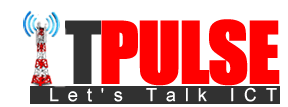Smart cities are one of the key beneficiaries of IoT technology, and a key component in making them economical will be intelligent parking. Monetised parking already helps municipal authorities to meet city overheads. It also influences driver behaviour, as a mechanism for congestion management.
The technology now available allows for more efficient use of parking space with more targeted pricing, and consequently beneficial changes in driver behaviour. The GSMA has just released an in-depth report on how Mobile IoT – networks using LPWA technology in licensed spectrum – is bringing smart parking to life, allowing both cities and drivers to manage their parking requirements by providing them with the information they need to do so intelligently.
Mobile IoT networks enable automation of the entire process via connected sensors. A precise record can be made of when a vehicle occupies and vacates a space, with instant transmission of that data allowing other drivers to gauge parking options in real time, and precise billing for the exact period the space has been occupied.
This is of particular interest in managing street parking, where entry and exit points are absent, and time spent is far harder to measure and enforce. A typical city must currently invest in parking attendants, hoping to detect and deter overstays, but with no guarantee that they will be in the right place at the right time; connected sensors make this process both cheaper and far more accurate.
Connected sensors also introduce greater flexibility in charges, allowing the data aggregated to determine peak times and capacity levels for demand-based pricing. Occupancy too becomes more flexible, with drivers able to select a space in advance and begin their billing period ahead of arrival; the pollution and traffic arising from physical in-car searching are therefore cut down, and revenues to the city will be maximised where spaces are reserved instead of sitting empty.
Recent research in San Francisco bears this out well: a study by Machina Research has shown that the city’s SF Park system has reduced time lost looking for parking spaces by up to 43%, with a concurrent reduction of 30% in miles travelled on local roads.
The advantages are clear not only for the user, who frees up time and fuel otherwise wasted, but for the city as a whole, with marked improvements in pollution and congestion. The overall city economy also benefits from the reduction in time wasted on its roads, and the efficiency gained in allocation of spaces drives up revenues: Machina found a monthly increase of $93.70 per space attributable to the use of smart parking.
Crucially, the financial undertaking required to implement smart parking through Mobile IoT in the first place is far from onerous. Mobile IoT requires no additional base sites to be installed by operators, and can instead simply be added to existing units. Once installed, Mobile IoT sensors require almost no maintenance, consuming very little power and therefore operating for extended periods on a simple battery.
And once online, Mobile IoT can penetrate deeper into buildings and further underground than standard network technologies, making it optimal for off-street smart parking. LPWA in licensed spectrum also offers the most reliable and secure connectivity available to the Internet of Things: all data passing through it is secured end-to-end, and accessible only to those with the appropriate authority to do so, ensuring preservation of faith in the system among users.
Smart parking is proving one of the first truly visible ways in which Mobile IoT is bringing smart cities to life. Successful use cases have cropped up all over the globe and are growing all the time: AT&T has already brought out deployments in Dallas and San Diego, and Deutsche Telekom has attracted several agreements from German cities since starting work in Bonn. With interest rapidly gaining pace, we can expect to see the economics of smart cities taking clearer shape in the years ahead, as cities optimise their revenues and help people get better access to local facilities and improve journey times for all.
Article written by Neill Young, Vertical Innovation Lead, GSMA




